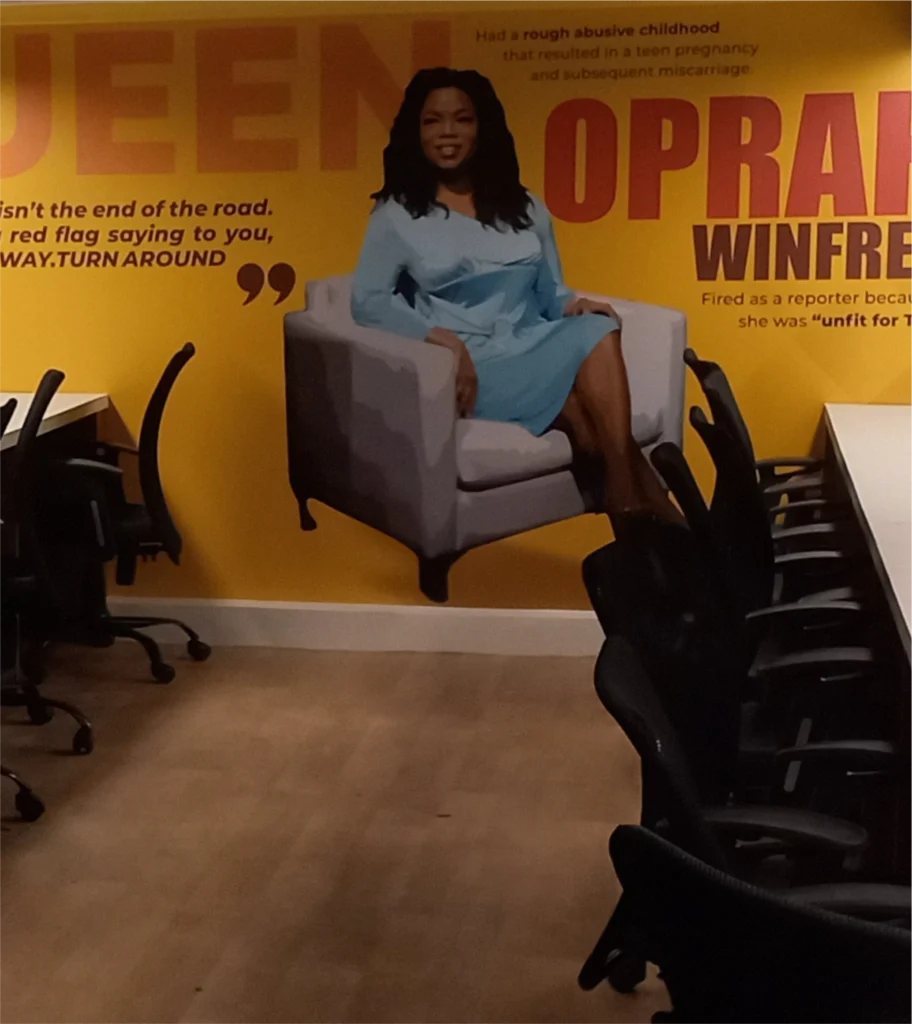Step through any store, café, or workspace, and you’re immediately immersed in more than just its products or services. You’re stepping into a living narrative—one that unfolds through every color choice, texture, scent, sound, and even the patterns of foot traffic. In a world inundated with digital messages, the physical space you create can become your most powerful storytelling medium. Let’s explore how Indian brands are weaving their identity into environments “beyond four walls,” and how you can apply these principles to craft spaces that speak your brand’s language fluently.
1. Layout & Flow: Guiding Your Guest’s Journey
Imagine walking into a Fabindia store. Warm wooden shelves, handwoven rugs underfoot, and a clear, intuitive path that draws you from one collection to the next. This isn’t accidental—it’s a carefully choreographed layout designed to highlight craftsmanship while allowing customers to explore at their own pace.
- Zoning by Emotion: Divide your space into “wow” zones (new arrivals, limited editions) and “comfort” zones (best-sellers, classic ranges).
- Sightlines Matter: Keep sightlines open. A visitor should always catch a glimpse of your hero product, much like Fabindia’s signature block-print sarees beckon from afar.
- Flexible Pathways: Use movable displays or modular furniture to adapt the flow for seasonal launches or events.
Action Step: Sketch a customer’s ideal path—from entry through discovery to checkout—and test it on colleagues before finalizing.
2. Sensory Branding: More Than Meets the Eye
Humans perceive the world through five senses. What if your space appealed to all of them?
- Lighting as Mood-Setter: At Café Coffee Day’s Reserve outlets, softer, amber-hued lighting creates an intimate ambience—perfect for lingering over a cappuccino.
- Soundscapes that Defy Silence: Think beyond background music. A Sula Vineyards tasting room greets you with the gentle rustle of grape leaves (recorded onsite) before segueing into soft jazz, transporting you straight to Nashik.
- Signature Scents: Just as luxury hotels like The Taj Mahal Palace in Mumbai diffuse a subtle cardamom-vanilla blend in their lobby, find a fragrance that complements your brand story—be it the earthy warmth of sandalwood or the fresh zing of lemongrass.
Action Step: Choose one sensory element to focus on first—sound, scent, or lighting—and prototype it in a small corner of your space to gauge reactions.
3. Cultural Cues & Local Resonance
A space that feels alien—even if it’s gorgeous—won’t foster a genuine connection. Indian brands are masters at embedding local culture into design:
- Chumbak’s Playful Pan-India Palette: Each store bursts with vibrant colors and patterns inspired by Indian textiles—from Banarasi brocades to Madhubani art. The result? A whimsical reflection of India’s creative spirit.
- Pepperfry Studios’ Curated Corners: Showcasing region-specific décor—jaali screens, Rajasthani block prints, Kerala percussion instruments—turns each studio visit into a mini cultural tour.
Action Step: Audit your décor for one authentic local element—be it an artisan-crafted piece, regional artwork, or traditional textile—and make it a focal point.
4. Technology & Interactivity: Blending Digital with Physical
In India’s metro cafés and retail outlets, technology is no longer a novelty; it’s an expectation.
- Interactive Flipbooks: Zomato’s office lobby features a digital wall showing live social-media feeds and user-generated food photos. It reinforces their brand narrative of being “where food happens”—and invites employees and visitors to engage.
- Augmented Reality (AR) Try-Ons: Tata CLiQ Luxury outlets have experimented with AR mirrors for jewellery try-ons, reducing friction and elevating the in-store experience.
Action Step: Identify a pinch point in your customer journey—long wait times, uncertain choices—and explore a simple tech plug-in to smooth it out.
5. Staff & Service: Living Brand Ambassadors
Your people are the final—and perhaps most vital—layer of your service-scape. After all, a beautifully designed space can fall flat if the staff don’t inhabit it authentically.
- Uniforms & Rituals: At The Oberoi Bengaluru, staff uniforms draw on Mysore silk weaves and traditional motifs, creating an immediate visual connection to local heritage.
- Storytelling Training: Every Café Coffee Day barista is trained not just in frothing milk, but in recounting the origin story of the beans. That small extra narrative turn transforms a coffee run into an experience.
Action Step: Host a workshop where frontline team members share the brand’s origin story—and encourage them to personalize it with their own “why I love our brand” anecdotes.
6. Sustainability & Social Impact: Designing with Conscience
Modern consumers—especially millennials and Gen Z—value ethical and sustainable practices. Your space can demonstrate your brand’s values in tangible ways.
- Eco-Fixtures: In FabIndia’s Delhi flagship, reclaimed wood and jute panels not only look beautiful but underscore the brand’s commitment to traditional crafts and reduced waste.
- Community Corners: Sula’s vineyard tasting rooms host monthly “harvest days” where guests can participate in grape-picking. It’s an immersive nod to agritourism and community engagement.
Action Step: Audit one material or process in your space—lighting, fixtures, disposables—and research an eco-friendly alternative.
7. Measuring Impact: Beyond Aesthetic Approval
A stunning interior is great, but the ultimate measure is business impact. How do you know your story is landing?
- Dwell Time & Repeat Visits: Use footfall-tracking sensors to see if customers pause longer in your brand zones.
- Social Shares: Create “Instagrammable” nooks—like Chumbak’s mural walls—then track how often they’re tagged online.
- Sales Lift: Compare conversion rates before and after a redesign. Did that handcrafted feature shelf boost accessory sales?
Action Step: Define three KPIs (e.g., dwell time, average spend, social-media mentions) and set up simple monthly reviews to track them.
Bringing It All Together
When you design a space with storytelling at its core, you transform every visit into an interaction, every corner into a conversation starter.
- Start Small: Tackle one sensory cue or local element first.
- Prototype & Iterate: Don’t wait for perfection; test zones or pop-up activations.
- Embed Your People: Train staff to live and breathe the narrative.
Whether you run a boutique design studio in Goa, a café in Bengaluru, or a retail chain in Mumbai, your service-scape is your most immersive brand channel. So, step beyond four walls and let every plank of flooring, every fragrance, and every staff greeting reinforce the story you’re here to tell.
Isn’t it time your space spoke as loudly as your logo?


